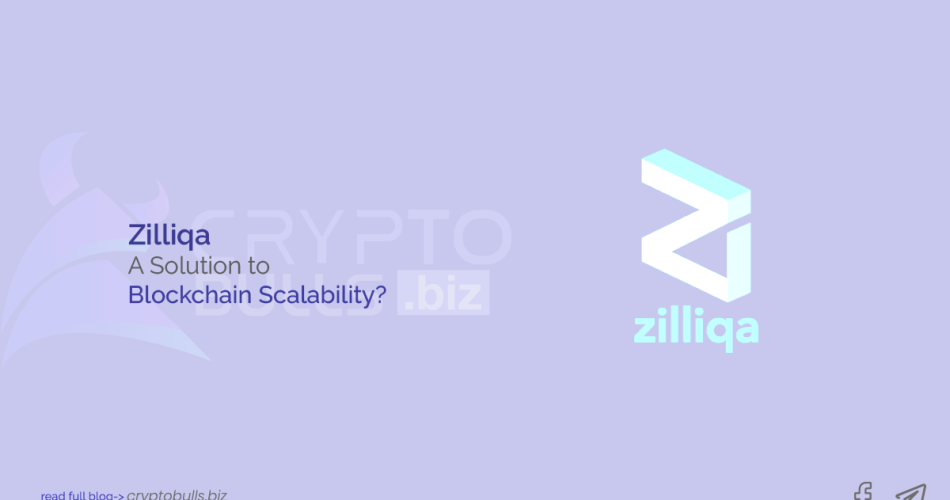Zilliqa: A Solution to Blockchain Scalability?
The blockchain landscape is riddled with the challenge of scalability, a problem that has hindered the technology’s potential. Zilliqa (ZIL) presents itself as a potential solution to this issue. This blog will explore whether Zilliqa’s unique approach can truly address the scalability problem that plagues blockchain technology.
What is Zilliqa?
Zilliqa is a high-throughput public blockchain platform that has been designed to scale in an open, permission-less distributed network securely. The core feature that makes Zilliqa stand out is its ability to handle a high volume of transactions smoothly. This is particularly significant in a world where digital transactions are increasing exponentially, and the need for efficient systems is paramount.
The secret behind Zilliqa’s efficiency lies in its use of sharding technology. Sharding is a concept that has been applied to improve network efficiency and speed. In the context of Zilliqa, it is used to divide the network into smaller parts, or “shards”, each capable of processing its own microtransactions. This approach allows for parallel transaction processing, which significantly increases the network’s capacity to handle large volumes of transactions.
The Origin of Zilliqa
Zilliqa’s journey began as a vision to address one of the most pressing issues in blockchain technology – scalability. The project was born out of research work conducted at the National University of Singapore by a team of academics, entrepreneurs, and engineers. Their goal was to create a secure, scalable, and efficient blockchain platform that could handle the increasing demand for digital transactions.
The team’s vision materialized in the form of Zilliqa, a unique blockchain platform that introduced the concept of sharding to the blockchain world. Sharding, a technique that has its roots in database systems, was adapted to fit into the blockchain paradigm, resulting in a platform that promised high throughput and efficiency. The vision behind Zilliqa’s creation was not just to build another blockchain platform, but to contribute to the evolution of blockchain technology itself.
How Does Zilliqa Work?
Zilliqa introduces a paradigm shift in how a blockchain reaches consensus. At its core, Zilliqa employs a technique known as sharding, which fundamentally changes the way transactions are processed. Unlike traditional blockchains where every node processes every transaction, in Zilliqa, the nodes are divided into smaller groups, known as shards, each capable of processing transactions in parallel. This means that as the network grows, so does its capacity to handle transactions, making Zilliqa a truly scalable blockchain.
But how does Zilliqa reach consensus within these shards and across the network? Zilliqa uses a hybrid consensus protocol combining Proof of Work (PoW) and Practical Byzantine Fault Tolerance (PBFT). PoW is used to establish identity and prevent Sybil attacks, while PBFT is used to achieve consensus on blocks. This unique approach to consensus enables Zilliqa to maintain a high level of security while achieving high throughput.
Zilliqa’s Tokenomics
Zilliqa’s native digital asset, ZIL, serves multiple purposes within the Zilliqa network. It’s utilized for transaction costs, executing smart contracts, and as incentives for mining nodes.
Zilliqa has a maximum supply of 21 billion tokens, with 60% already in existence at the time of the Token Generation Event (TGE). The total supply of ZIL is projected to be fully vested by June 2029. The token supply has had an inflationary emission rate since its inception.

The initial distribution of ZIL was as follows:
- 30.00% was assigned to Early & Community Contributions
- 40.00% was assigned to Mining Rewards
- 30.00% was assigned to Company, Team, Agencies
Zilliqa raised $2.23 million in the Early Contributors Sale in January 2018, with an average price of $0.0038807. In addition, $19.77 million was raised in the Community Sale in December 2017, with an average price of $0.0034508.
The value of ZIL is derived from its utility within the Zilliqa network and the demand for its use cases. Like any other cryptocurrency, the value can also be influenced by market dynamics, technological advancements, and regulatory changes.
Zilliqa is currently undergoing significant changes in its Tokenomics landscape to expand the platform’s capabilities in absorbing newly minted tokens, which the current token economy is unable to do. This will be achieved by restructuring some mechanisms to create an ‘active circular economy’ on-chain. This economy will be fortified by three pillars:
- Improved Staking mechanisms: The change in the block reward split from 95% (miners) — 5% (staking nodes) to 60% (miners) — 40% (staking nodes) will mean more rewards will be available for delegators and hence more $ZIL can be staked creating a deeper sink for $ZIL.
- This will also help maintain a healthy annual yield from staking.
- To compensate for the loss to the miners, the proposal is to increase the block reward by 40%.
With the new block reward split in favour of staking nodes and a counter increase in inflation (to favour miners), the actual mining reward per epoch will go down by only 12%. Overall, these changes make more $ZIL available for staking. Even if 80% of the supply gets staked in the next 1 year, these changes will ensure that the yield will remain a healthy ~6%.
Comparison with Other Blockchains
When comparing Zilliqa to other blockchain platforms, its unique approach to scalability through sharding technology stands out. Traditional blockchains like Bitcoin and Ethereum process transactions linearly, meaning each node in the network processes every transaction. This can lead to congestion and slow transaction times, especially as the network grows.
Zilliqa, on the other hand, divides the network into smaller groups, or “shards”, each capable of processing transactions in parallel. This means that as the network grows, so does its capacity to handle transactions, making Zilliqa a truly scalable blockchain. This is a significant advantage over traditional blockchains, which struggle with scalability issues.
Furthermore, Zilliqa’s hybrid consensus protocol, which combines Proof of Work (PoW) and Practical Byzantine Fault Tolerance (PBFT), provides a unique balance between security and efficiency. While PoW is used to establish identity and prevent Sybil attacks, PBFT is used to achieve consensus on blocks. This approach allows Zilliqa to maintain a high level of security while achieving high throughput, setting it apart from other blockchain platforms.
The Future of Zilliqa
As Zilliqa continues to evolve, it faces the challenge of maintaining its unique selling proposition – scalability through sharding, while addressing its current limitations. One of the key areas of focus for Zilliqa is to enhance its smart contract capabilities to attract more developers and users to its platform. Additionally, interoperability with other blockchains is another aspect that Zilliqa might need to consider to stay relevant in the rapidly evolving blockchain landscape.
The potential future developments for Zilliqa could have significant implications for the broader crypto market. If Zilliqa’s approach to scalability proves successful, it could set a new standard for blockchain platforms, prompting a shift towards sharding and similar technologies. This could lead to an overall increase in the adoption and utility of blockchain technology, as scalability has been a major roadblock to mainstream adoption.
However, it’s important to note that the future of Zilliqa, like any other blockchain project, is subject to various factors including technological advancements, regulatory changes, market dynamics, and community support.
Conclusion
Zilliqa, a unique player in the blockchain landscape, has shown us that innovation and adaptability are key in addressing the challenges of scalability. Its journey, filled with both triumphs and trials, serves as a testament to the potential of blockchain technology. As we conclude our exploration into Zilliqa, we are left with a sense of anticipation for what the future holds for this distinctive platform.
In the grand scheme of blockchain evolution, Zilliqa’s story is but one chapter. Yet, it’s a chapter that inspires curiosity and excitement for what lies ahead. As we continue to navigate the complex world of blockchain, we eagerly look forward to witnessing Zilliqa’s role in shaping this technology’s future.


